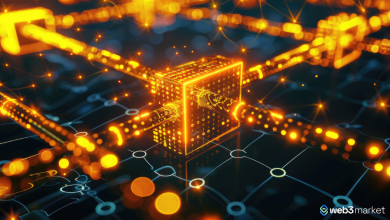
As digital infrastructure demands grow exponentially in 2025, the role of open source in reshaping data centre economics and scalability has reached an inflection point. The recent release of DeepSeek’s open-source model – which trained an advanced AI system for just $6 million compared to the hundreds of millions typically required – triggered a $1.5 trillion market shift within days. This event exemplifies how open source is not merely complementing innovation but totally disrupting established economic models in the data centre industry.
At a time when operators are questioning the sustainability of massive capital investments in AI infrastructure, open-source solutions are emerging as a critical counterbalance to the “.com-like” exuberance driving market expansion. These solutions are increasingly the foundation enabling more cost-effective and agile technological deployment, particularly within data centres where scalability, efficiency, and long-term economic viability are now being reassessed.
Expanding Access to Infrastructure with Open Source
Deploying and scaling modern data centres requires significant capital investment, with costs spanning land acquisition, specialised cooling, and high-performance computing hardware. Proprietary solutions often exacerbate these financial constraints. Open-source models, by contrast, lower the barrier to entry, enabling organisations to harness cutting-edge capabilities without the prohibitive costs of proprietary alternatives. DeepSeek’s model demonstrated how open-source solutions can catalyse industry-wide shifts, making advanced computing more accessible while reducing implementation expenses.
This aligns with growing concerns among data centre operators about the sustainability of current AI infrastructure investments. Industry leaders are questioning whether we’re experiencing a ‘.com moment’ of over-investment, where hype is driving massive capital outlays that may not reflect sustainable business models or technological trajectories. With DeepSeek demonstrating the ability to train advanced models for approximately $6 million (versus hundreds of millions), operators are reconsidering the economic fundamentals of AI infrastructure deployments.
Innovation vs. Risk: The Open-Source Dilemma
While open-source fosters innovation and cost efficiency, it also brings challenges, particularly around security, data residency, and developer compensation. Many open-source tools now have commercial support structures, but businesses must remain vigilant.
Without open source, the internet as we know it, the infrastructure, and the digital economy wouldn’t exist. On the hardware level, initiatives like the Open Compute Project continue to drive innovation, sustainability, and data centre density. These open standards are instrumental in shaping scalable and energy-efficient infrastructure, ensuring that data centres remain adaptable to evolving technological demands.
However, the shift from open-source to commercial licensing models raises complexities around security vulnerabilities, end-of-life software risks, and financial remuneration for developers. Foundations such as Apache and Linux provide valuable frameworks, but licensing and cybersecurity considerations require more robust oversight to mitigate potential exposure.
AI and Open Source: A Symbiotic Relationship
AI infrastructure demands are accelerating, placing immense pressure on data centres to optimise scalability and efficiency. Open-source frameworks play a crucial role in this evolution, enabling organisations to deploy AI workloads more cost-effectively while ensuring interoperability with existing infrastructure.
The industry is witnessing a significant shift from AI training to inference workloads, fundamentally changing infrastructure requirements. This transition could enable more distributed, smaller data centres closer to the edge rather than the massive facilities currently being planned and built. Open-source solutions are critical enablers of this evolution, allowing for more flexible and adaptable deployments.
The success of DeepSeek’s model underscores how open source can lower barriers to AI adoption, making advanced computing more accessible and sustainable. More recently, China’s Manus, the world’s first fully autonomous AI agent, further demonstrates how quickly the technological landscape is shifting. Unlike traditional AI assistants, Manus operates independently, completing complex tasks without user intervention – representing another leap forward that may render current infrastructure investments questionable.
This rapid evolution creates economic challenges for proprietary AI companies. Industry giant OpenAI is projected to lose $5 billion on just $3.7 billion in revenue, largely driven by CAPEX and investments that may soon be rendered obsolete by the rapid evolution of AI training methodologies. As AI applications continue to expand, data centres leveraging open standards and open-source platforms will be better equipped to meet rising computational demands while managing energy consumption and cost.
Open Standards: Enabling Scalable and Sustainable Data Centres
Beyond software, open standards are redefining the physical architecture of data centres. The Open Compute Project (OCP) and modern Data Centre Infrastructure Management (DCIM) platforms demonstrate how open-source standards improve scalability and sustainability while reducing deployment costs. Open-source hardware designs drive efficiencies in power consumption, cooling, and equipment density, reinforcing the long-term viability of digital infrastructure.
Beyond traditional efficiency metrics like Power Usage Effectiveness (PUE), the industry is increasingly focused on Power Capacity Effectiveness (PCE) – measuring how effectively allocated power is actually being utilised. For instance, if a data centre secures 100MW but only utilises 20MW, power companies are beginning to reconsider their commitments, potentially clawing back unused capacity to serve community needs. This represents a crucial economic and sustainability concern, as power companies begin to reassess their commitments to data centres that secure capacity but don’t fully utilise it. Open standards and management solutions provide the transparency and optimisation capabilities needed to address these emerging challenges.
For businesses navigating the complexities of managing large-scale infrastructure, adopting open standards and cloud-native management platforms ensures long-term adaptability. Cloud-based DCIM solutions that align with open principles enable data centres to scale more flexibly, enhance efficiency, and improve operational oversight by leveraging real-time data and automation.
The Future of Open-Source Models in Digital Infrastructure
The evolution of digital infrastructure remains inseparable from open-source innovation. Whether in software frameworks, hardware designs, or management solutions, open-source principles are instrumental in shaping the future of data centres. However, enterprises must balance the advantages of open-source accessibility with the need for robust governance, cybersecurity, and sustainable business models.
The current wave of AI infrastructure investment presents a fundamental challenge: data centre facilities are built with 40–50-year lifespans, while AI technology is evolving at a dramatically faster pace. Open-source approaches offer a potential solution to this mismatch, enabling more agile and cost-effective adaptation to technological changes without the burden of massive, long-term capital commitments.
These open-source breakthroughs from DeepSeek, Manus, and others will undoubtedly force the industry to become more efficient and sustainable. Much like the internet’s .com moment, we’re likely heading for a period of correction and consolidation. After the inevitable disruption, true market leaders will emerge with more resilient business models and technology approaches.
The modern data centre economy is moving towards a hybrid approach—leveraging open-source innovation while integrating commercial safeguards. As infrastructure scales, organisations that strategically embrace open-source frameworks while mitigating associated risks will be best positioned for long-term success. The question is no longer whether open source is critical to data centre operations—it’s how businesses will navigate this new paradigm to unlock its full potential.
Competition in this space isn’t merely beneficial, it’s essential for the healthy development of AI infrastructure. By continuing to support and develop open-source alternatives, the industry ensures a necessary counterbalance to closed ecosystems, ultimately driving innovation that remains accessible to all market participants while preventing unsustainable investment bubbles.




